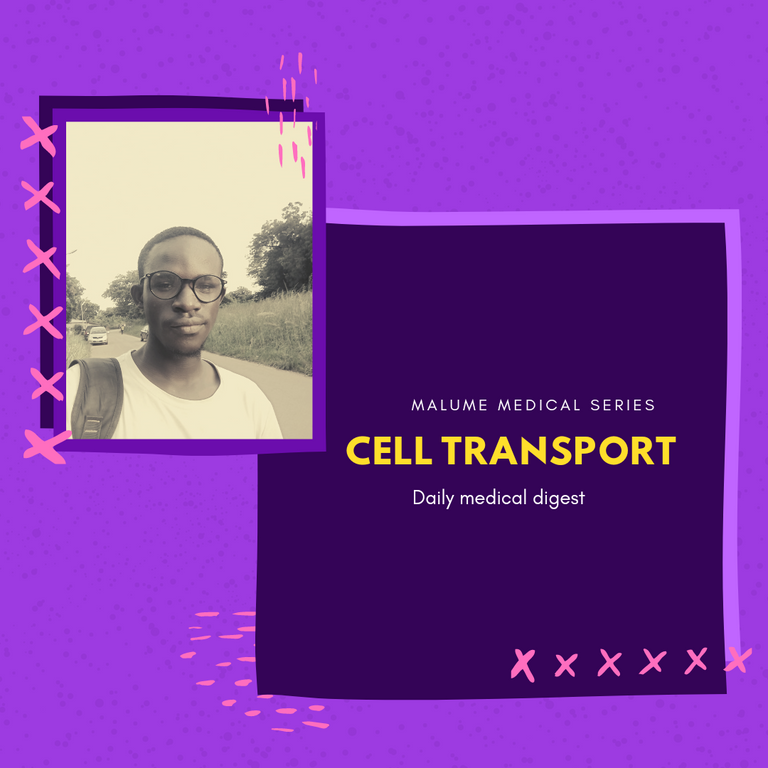
Human beings are made up of cells which need to work together to maintain its systems . Sometimes these cells need substances and also need to remove waste generated from its cellular activities or maybe substances they have created . To do this , they have to transport this stuffs in or out . So the means of transporting the substances is what we call cell transportation and they are of two types . The classification of cell transport us based on whether they utilize ATP or not . The two types are ;
- Passive transport
- Active transport
Passive transport
This form of transportation of substances of molecules in or our doesn't require energy or utilizing ATP . Here molecules are transported along the electrochemical gradient . There are some types of it :
- Diffusion
- Bulk flow
3.filtration - Osmosis
DIFFUSION
This is the process through molecules move around and it is based on the fact that molecules are always in motion due to the presence of natural thermal energy they have and it is this thermal energy , heat which enable them move and diffuse from one area to another . This is principle is called Simple diffusion. There is another type of diffusion called facilitated diffusion. This type of diffusion involves the use of membrane carriers to enable molecules . without these carriers the molecules can't be transported . A good example is d glucose transporters
Some factors affect rate of diffusion
- Thickness of membrane
.2. Size of molecules - Temperature
- Permeability of membrane
- Electrochemical gradient of substance
- Solubility of solute
Bulk flow
This is the movement of molecules against a pressure gradient from a region of higher pressure to a region of power pressure .this is seen in lungs where respiration occurs
filtration
This is the forceful movement of molecules across two sides due to difference in there pressure
osmosis
This is the movement of water across a semipermeable membrane because of difference in solute concentration
ACTIVE TRANSPORT
This the form of transportation that involves the use of ATP to provide the energy needed for its transport and it involves uphill movement where molecules move against their own concentration gradient. This fork of transport involves the use of carrier proteins called pumps due to eh fact it moves molecules uphill . It's carrier proteins can be a uniport pump , symport pump or anitport pump .The ATP can be used both directly and indirectly leading to. The division of active transport into two types :
- Primary transport
- Secondary transport
Primary transport
This transport involves direct utilisation of ATP with the transporters hydrolysing ATP leading to It's own phosphorylation and causing a change in itself leading to the transport of the molecules.thr transporters here are called ATPase cause they break down ATP to release energy . Examples : Na/k pump , H/k pump , CA pump , H pump
Secondary transport
Here we see ATP been utilized indirectly. It means that we see other molecules been transported with these primary transported molecules..it is usually the ion from primary transport and another molecule of different.nature . The movement of the ion is always downhill here with that of the molecule varying
Some special forms of active transport
- Endocytosis
-pinocytosis
-phagocytosis
-receptor mediated endocytosis - Exocytosis


I will like to use this medium to say a proper happy new year and to announce this medical series which I hope helps both you guys and I hope we have fun